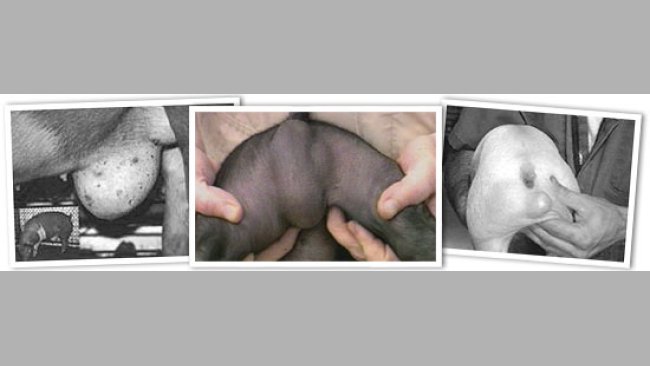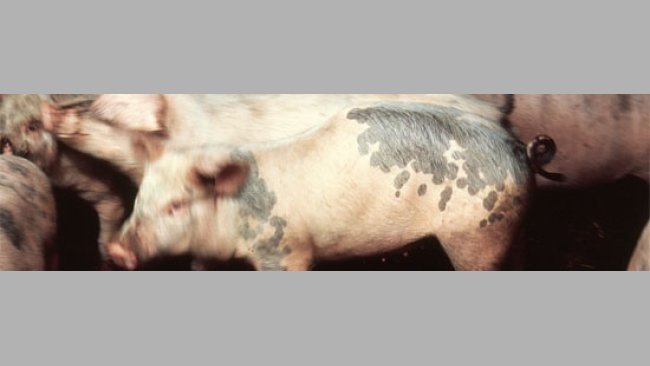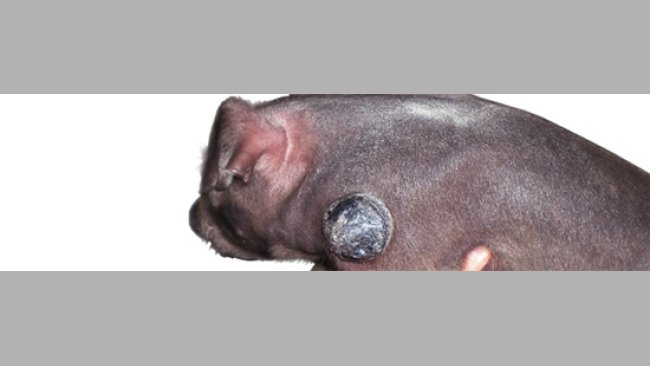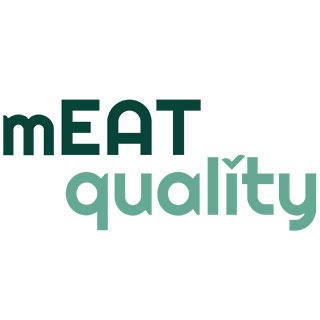
Heritability
Traits of high or moderate heritability are easily improved by testing and selection. However, for traits of low heritability, improvements come from exploiting heterosis and by the use of BLUP.
The pig sector events all around the world
Weekly newsletter with all the pig333.com updates
Swine industry news in your email
Pig health: news and articles on PRRS, PCV2, biosecurity, etc, Pig disease guide, atlas of pathology, clinical cases…
Biocheck.UGent is an independent, risk-based, scientific scoring system for assessing the quality of your on-farm biosecurity.
A visual and practical step-by-step guide on how to perform a necropsy on a pig.
All the information about ASF: how to recognize the disease, how it is transmitted, pictures of lesions, latest news, guides, etc.
All the information on Foot and Mouth Disease in pigs: how to recognize the disease, how it is transmitted, images of lesions, latest news, guides,...
Description of the most important diseases and conditions in pigs
Images of major swine diseases
Pig disease diagnostic tool
Definition for the most commonly used pig terms
Simulator that calculates the amount of drug to add to the water when using a flow dispenser.
Weekly newsletter with all the pig333.com updates
Pig Prices by countries. Pork production and trade. News of the pig market and the raw materials
The latest slaughter pig prices in the most important pig markets. Check the evolution of the historical prices in charts and in several currencies.
Latest quotations for the main commodities used in pig feed. Historical graphs with the pig price and estimated feed price.
Figures & trends in pig numbers, pork production and pork trade.
Global production and trade data for the most important raw materials
Weekly newsletter with all the pig333.com updates
Articles on nutrition and pig feeding, characteristics of raw materials and additives for pig feed. Prices of raw materials
Latest quotations for the main commodities used in pig feed. Historical graphs with the pig price and estimated feed price.
Technical sheets of the main raw materials and additives used in swine feed. They include a comparison of nutritional values from various sources, product
Global production and trade data for the most important raw materials
Definition for the most commonly used pig terms
Use this tool to diagnose problems with the feed conversion ratio. Click on the flowchart or on the buttons within the text to navigate through the different parts of the tool.
A biweekly newsletter with the latest developments in swine nutrition
Articles on genetics and pig reproduction: genetic improvement, genomics, artificial insemination, use of hormones
Compare production data, calculate the number of sow, nursery, and finishing spaces, and visualize your tasks on the work schedule by type of BMS.
Tool that allows you to calculate the replacement rate in your farm
Definition for the most commonly used pig terms
Use this tool to find out why your farrowing rate is less than ideal. Click on the flowchart or on the buttons found within the text to navigate through the different parts of the tool.
Weekly newsletter with all the pig333.com updates
Management, pig farm management, work planning in each production stage: management in gestation, grow finish, batch farrowing
Compare production data, calculate the number of sow, nursery, and finishing spaces, and visualize your tasks on the work schedule by type of BMS.
Tool that allows you to calculate the replacement rate in your farm
Definition for the most commonly used pig terms
Weekly newsletter with all the pig333.com updates
Design of facilities and equipment for pig farms: building design, climate control, feeding systems, etc.
Biocheck.UGent is an independent, risk-based, scientific scoring system for assessing the quality of your on-farm biosecurity.
Environmental Footprint Calculator along the pork value chain.
Definition for the most commonly used pig terms
Simulator that calculates the amount of drug to add to the water when using a flow dispenser.
Use this tool to explore which slurry management strategy best fits your situation. Click on the flow chart or on the buttons within the text to navigate through the different parts of the tool.
Weekly newsletter with all the pig333.com updates
What makes us stand out is the quality and independence of our contents. Find out about the authors who make it possible. Our goal is to generate a virtual community of advanced users in the sector.

Rex Walters is a leading pig geneticist.
He studied Animal Science at Wye College (Imperial, University of London) and then stayed on to complete a Master of Philosophy by research in pig genetics. This was followed by a Doctorate in 1984. He spent four years lecturing and doing research, followed by appointment as Livestock Geneticist with the multinational Unilever Agribusiness Group. He then became Technical Director of one of the global Pig Breeding Companies. For more than a decade he has operated an independent consultancy (Livestock Genetics Ltd.) in livestock breeding and genetics with key clients in Asia, Australia, Europe and South America.
Rex is an adviser to several national and international organisations (including the British Pig Association) and is an appointed expert and monitor in livestock breeding and biotechnology to the European Commission in Brussels.
Rex has published, or presented, more than 150 papers on pig breeding and genetics and is a regular invited contributor to international seminars and conferences. He is particularly interested in the practical exploitation of genetics and genetic conservation
Updated CV 30-Jan-2013

Traits of high or moderate heritability are easily improved by testing and selection. However, for traits of low heritability, improvements come from exploiting heterosis and by the use of BLUP.

Benefits and risks of heterosis and inbreeding in pig production.

Does the complexity and expense of genomics mean that it will only be available to the major global pig breeding companies in the future? If the price of genotyping continues to reduce, it may be possible for medium and smaller size breeding companies to share funding and identify desired genotypes.

One of the greatest long-term potentials for genomic selection is to identify specific genes or genomic regions with a significant impact on pig health and to aid selection for disease resistance and/or disease tolerance.

The key benefits from the use of DNA information are a greater overall genetic progress, improved selection for ‘difficult’ traits such as piglet survival and ...

Teams from 54 research groups, led by the Universities of Edinburgh (UK), Illinois (USA), Uppsala (Sweden) and Wageningen (Netherlands) have sequenced the entire genome of the pig.

The most relevant genetic defects of the skin are epitheliogenesis imperfecta, pitryisis rosea and malignant melanoma. Recent data suggest an increase of the melanoma incidence in Duroc bred, incidences of 2.60% and 0.62% have been found in two Duroc nucleus herds.







Welcome to 333
Connect, share, and interact with the largest community of professionals in the swine industry.
Celebrating 196311Users on 333!
Sign upAlready a member?





